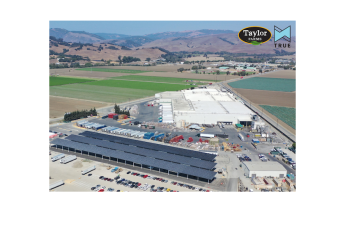PODCAST: Shay Myers on freight issues, retail updates, social media

Grocery store shelves shouldn’t be as spotty and short as they were the first few weeks of 2022, but freight issues and other logistics challenges are a long way from resolving any time soon.
“Basically, the week after Christmas and after New Year’s we saw a 70% increase in our freight rate, but that number is probably 80% back,” said Shay Myers, CEO of Owyhee Produce in Nyssa, Oregon and Parma, Idaho. His company grows, packs and ships onions and other fresh produce nationwide.
“Well, it’s back in the realm of normality — mind you, the normality of the COVID era. But it is back to where you can find trucks," he said.
Myers is also known for his short explainer reels to consumers as @ShayFarmKid on TikTok, Instagram and Facebook, as well as his posts for the more industry-heavy audience on LinkedIn.
Shelves are being replenished but there’s still a backlog and issues will continue, he said in late January.
When Myers was in a bind, he’d buy from different growing districts to save a couple days on freight and leave store shelves empty for less time.
He has seen some encouraging numbers from November, showing more freight carriers are getting approvals to work — the highest it had been in several years, he said.
“So, people are deciding to either start driving trucks or get back in their trucks. And a lot of that has to do with the financial reward,” he said. “It’s a six-figure job to drive a truck across the country now. So, I think that's what is calling people back into the driver's seat. It's not an easy job, and it's not something that a lot of people want to do.”
Drivers, especially young people considering this career, are concerned about the coming automation, or self-driving trucks. They fear they will spend a few years learning how to drive the trucks, earn some seniority get the desirable lanes and then automation will take away their jobs.
“I think that's coming, but I don't know that five years is really the number. It might be more like 10 or more, but time will tell,” Myers said.
The 70% increase in freight rates in the early weeks of 2022 were on top of the estimated 70% price hikes after COVID-19 pandemic hit. That means even after the early 2022 chaos has settled, freight rates are still almost double what they were pre-COVID, he said.
Since then, more dollars have stayed domestic, as we do more commerce within the U.S., placing more pressure on lumber, building materials and domestic goods, so much so that the supply has not met the demand.
“So, an already limited number of trucks have that much more to move, and then you throw e-logs into that as well. And any driver will tell you that e-logs significantly diminish their productivity,” Myers said. And one more piece that hasn't gone away, and that won't go away right now, is the lack of labor available at shipping point and destination.”
Read more: 2022 brings big challenges in supply chain, logistics, trucking
Trucks are still waiting a couple extra hours to get loaded at many locations.
“We’re fully staffed, so it hasn’t been as bad here, but drivers are telling me constantly that they're waiting two or three times longer than normal to get loaded,” he said. “The same things are happening on the destination end. When they get to the (distribution center) or the unloading point, they're waiting for two or three long times longer there. So that, again, diminishes the capacity of the trucks that are on the road.”
Myers has no simple solution for these freight issues.
“Just like we don't have a solution for getting more drivers on the road or more trucks on the road, we don't really have a solution for the labor constraints or challenges that we have domestically either,” he said.
But Myers does think it’s important to share these complexities to the industry and to consumers, whether it be on social media or another platform. That way, when suppliers ask for higher prices for their products, buyers and consumers can better understand why.
Another story with Shay’s perspective on why produce companies and retailers should use social media and how, is coming soon. Also, listen to the Tip of the Iceberg Podcast, Episode 72, for all the details.







